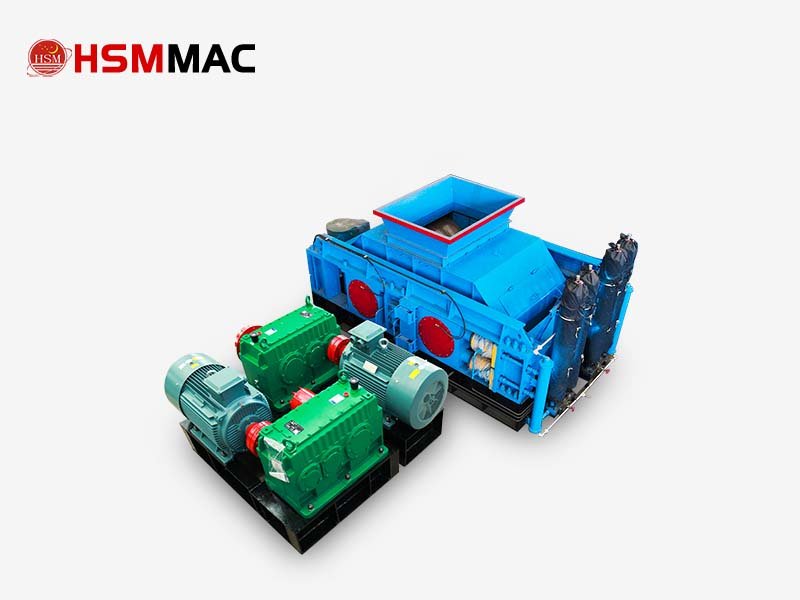Why Recommend Hydraulic Roll Crusher?
Hydraulic roll crusher is a kind of high efficient and precise crushing equipment, its core working principle is based on the synergistic effect of double roll extrusion crushing mechanism and hydraulic intelligent control system. Compared with the traditional spring roller crusher, it has the following advantages:

1. The core crushing principle of Hydraulic Roll Crusher: double roll extrusion.
Material Crushing Process
Feed and roll: the material falls into the two parallel rolls through the feed opening. And is rolled into the roll gap under the friction and gravity of the roll surface.
Extrusion and crushing: the two rollers rotate in opposite directions (the speed is usually 10-20 rpm). The material is subjected to multiple forces such as extrusion, shearing, rubbing, etc., and the material is crushed into the target size when the external force exceeds the material lattice polymerisation force.
>Discharge control: The crushed material is discharged through the roll gap (the size range is usually 0-15mm) and discharged downwards to the conveying equipment.
Source of crushing force
The roll surface of Huashengming Hydraulic Roll Crusher is covered with high wear-resistant material (high manganese steel or chromium-molybdenum alloy, hardness ≥ HRC60).
>The roll gap is adjustable in a wide range (1-40mm), adapting to the needs of different material hardness and particle size (e.g. 1-5mm for sand making, 8-16mm for road base material).
2. Key role of hydraulic system
The hydraulic system is the core of the hydraulic roll crusher, achieving precise control, overload protection and power optimisation:
Roll gap dynamic adjustment
The hydraulic cylinder pushes the movable roll to move and adjusts the gap between the two rolls in real time (accuracy up to ±0.1mm),. Ensuring the error of discharge particle size ≤3%.
>Control the opening degree of solenoid valve through PLC. And automatically adjust the pressure (working pressure 10-20MPa) according to the material characteristics (e.g. granite needs high pressure, limestone can be reduced pressure).
Overload protection mechanism
Foreign object avoidance: when metal and other hard objects enter. The hydraulic system increases the roller gap to discharge the foreign object within 0.5 seconds. And the accumulator (filled with nitrogen gas 6-8MPa) absorbs the impact, and then resets automatically.
Pressure stabilisation: the accumulator buffers instantaneous pressure fluctuations to avoid equipment damage and reduce downtime.
Power transmission and energy saving
The hydraulic motor drives the rollers to rotate, providing high torque output (20%-30% energy saving compared to mechanical transmission), with a unit power consumption of only 0.8-1.2 kWh/tonne.
The system dynamically adjusts the power and automatically reduces the pressure when no load, reducing ineffective energy consumption.
3 .Application Scenarios of Hydraulic Roll Crusher
Mining metallurgy: crushing granite, iron ore (compressive strength ≤250MPa), discharging 1-5mm mechanism sand.
>Construction waste recycling: no screen bottom design to prevent sticking and blocking. Processing concrete blocks with moisture content ≤35%, recycled aggregate ≤3mm.
Chemical industry: precise crushing of sulfur, fertilizer raw materials, sealed structure to prevent dust pollution.
Highway construction: preparation of asphalt aggregate (3-5mm), the proportion of cubic particles ≥95%.



